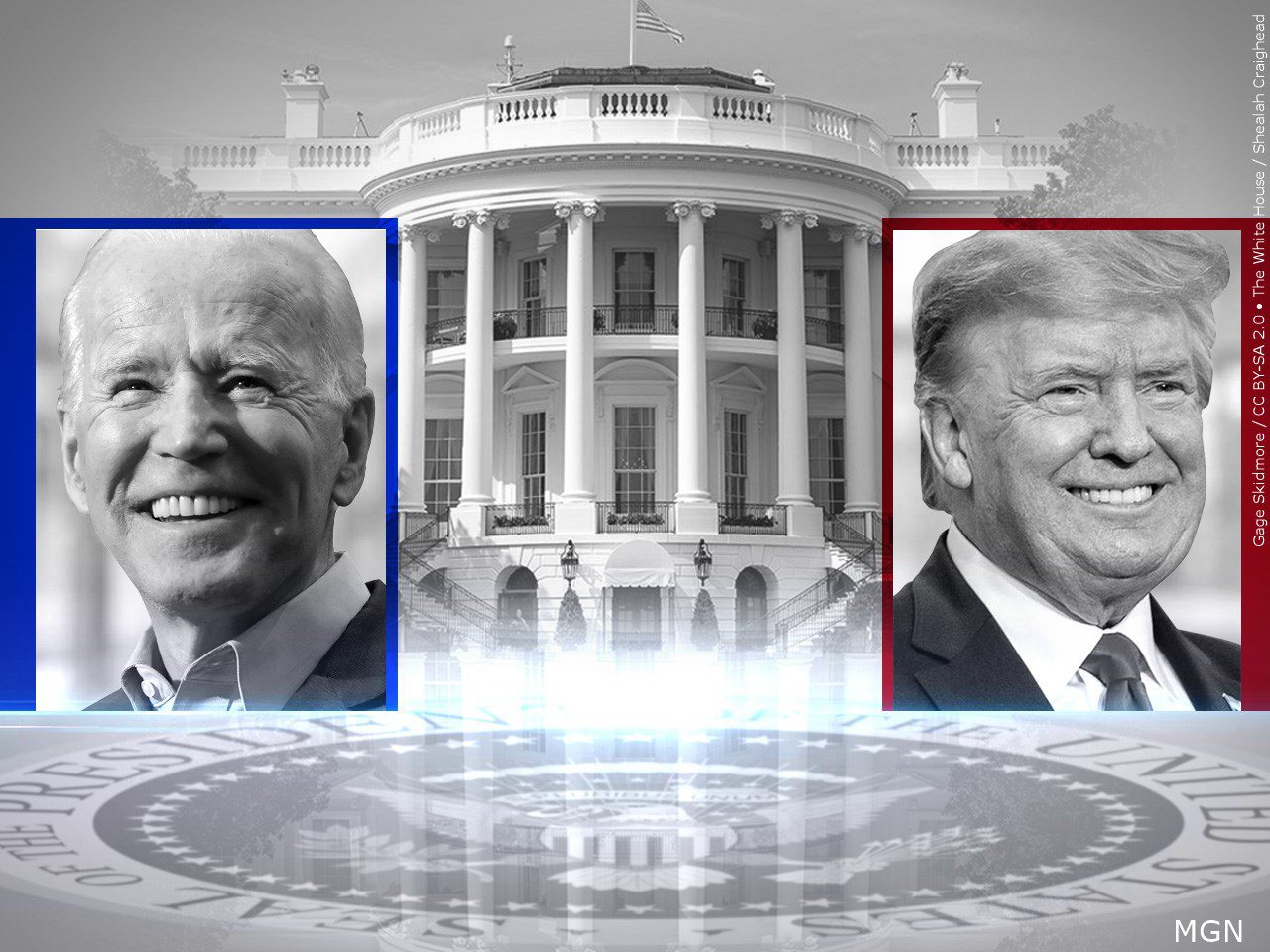Minnesota Primary Election Overview: Minnesota Primaries

The Minnesota primary elections are a crucial stage in the state’s political process, influencing the selection of candidates for various federal and state offices. These primaries offer registered voters the opportunity to express their preferences and ultimately shape the political landscape of Minnesota.
The Minnesota primary elections are significant because they determine the candidates who will represent their respective parties in the general election. This process allows for a diverse range of candidates to compete for their party’s nomination, potentially leading to a more competitive and representative general election.
Key Dates and Deadlines, Minnesota primaries
The Minnesota primary elections are governed by a specific timeline, with key dates and deadlines that voters need to be aware of. These deadlines ensure the smooth and orderly conduct of the election process, from voter registration to the casting of ballots.
- Voter Registration Deadline: The deadline to register to vote in the Minnesota primary elections is typically several weeks before the election date. This deadline ensures that all eligible voters have the opportunity to register and participate in the primary process.
- Primary Election Date: The Minnesota primary elections are typically held in June, with the exact date varying depending on the year. This date marks the culmination of the primary process, where voters cast their ballots to select their preferred candidates.
- Absentee Ballot Request Deadline: Voters who are unable to vote in person on Election Day can request an absentee ballot. There is a deadline for requesting these ballots, ensuring that they are processed and sent out in a timely manner.
Major Political Parties and Candidates
The Minnesota primary elections involve the participation of major political parties, each with their own slate of candidates vying for the nomination. These parties represent different political ideologies and platforms, offering voters a range of choices in the primary process.
- Democratic-Farmer-Labor Party (DFL): The DFL is the state’s Democratic Party, known for its progressive policies and social justice advocacy. The party typically fields candidates who align with these principles, seeking to represent the interests of a diverse electorate.
- Republican Party of Minnesota: The Republican Party is the state’s conservative political party, known for its emphasis on limited government and individual liberty. The party’s candidates often advocate for policies that reflect these values, appealing to voters who share these beliefs.
- Other Parties: While the DFL and Republican Party are the two major parties in Minnesota, other parties, such as the Green Party and the Libertarian Party, may also participate in the primary elections. These parties offer alternative viewpoints and policies, providing voters with a broader range of choices.
Key Issues and Debates

The Minnesota primary elections are shaping up to be a consequential event, with several key issues and concerns driving the campaigns. These issues have the potential to significantly impact voter turnout and the outcome of the elections.
The Economy and Cost of Living
The economy and the rising cost of living are among the most pressing concerns for voters in Minnesota. Inflation has reached a 40-year high, impacting the purchasing power of families and businesses. The cost of housing, groceries, and gasoline has risen dramatically, putting a strain on household budgets.
Candidates are offering various solutions to address these challenges. Some advocate for tax cuts to stimulate economic growth, while others focus on policies aimed at increasing wages and affordability. The debate centers on the effectiveness of different approaches to address inflation and the rising cost of living.
“The rising cost of living is a major concern for Minnesota families. We need to address inflation and make sure everyone has access to affordable housing, healthcare, and education,” stated one candidate.
Education and School Funding
Education is another crucial issue in the Minnesota primary elections. Voters are concerned about the quality of public education, funding for schools, and the challenges facing teachers and students. The debate centers on the best way to improve educational outcomes and ensure that all students have access to a quality education.
Candidates are offering different proposals to address these challenges. Some advocate for increased funding for schools, while others focus on policies aimed at improving teacher salaries and providing more support for students. The debate also touches on issues like school choice, standardized testing, and curriculum development.
“Our children are our future, and we need to invest in their education. We need to make sure our schools are well-funded and that our teachers have the resources they need to succeed,” emphasized a candidate.
Healthcare and Access to Care
Healthcare remains a significant issue in Minnesota politics. The state faces challenges related to the cost of healthcare, access to care, and the availability of healthcare professionals. The debate centers on the best way to ensure affordable and accessible healthcare for all Minnesotans.
Candidates are offering various solutions to address these challenges. Some advocate for expanding Medicaid, while others focus on policies aimed at lowering the cost of prescription drugs and increasing competition in the healthcare market. The debate also touches on issues like mental health care, long-term care, and reproductive health.
“Everyone deserves access to quality, affordable healthcare. We need to work together to ensure that all Minnesotans have the care they need, regardless of their income or background,” stated a candidate.
Climate Change and Environmental Protection
Climate change and environmental protection are growing concerns for voters in Minnesota. The state faces challenges related to air and water quality, climate-related disasters, and the transition to a more sustainable economy. The debate centers on the best way to address these challenges and protect the environment for future generations.
Candidates are offering different proposals to address these challenges. Some advocate for investments in renewable energy and clean transportation, while others focus on policies aimed at reducing greenhouse gas emissions and protecting natural resources. The debate also touches on issues like energy efficiency, sustainable agriculture, and environmental justice.
“We need to take action on climate change now. We need to invest in renewable energy, protect our natural resources, and create a more sustainable economy for the future,” declared a candidate.
Social Justice and Equity
Social justice and equity are becoming increasingly important issues in Minnesota politics. Voters are concerned about racial disparities, income inequality, and access to opportunity. The debate centers on the best way to address these challenges and create a more just and equitable society.
Candidates are offering various solutions to address these challenges. Some advocate for policies aimed at reducing poverty and discrimination, while others focus on investments in education, healthcare, and affordable housing. The debate also touches on issues like criminal justice reform, immigration, and LGBTQ+ rights.
“We need to build a Minnesota where everyone has the opportunity to succeed. We need to address racial disparities, income inequality, and ensure that everyone has access to the resources they need to thrive,” emphasized a candidate.
Voter Demographics and Trends

Minnesota’s diverse electorate, coupled with evolving political landscapes, creates a complex interplay of demographics and voting patterns. Understanding these dynamics is crucial for navigating the state’s primary elections.
Demographic Breakdown
Minnesota’s voter base is characterized by a diverse range of demographic factors. While white voters remain the majority, the state is experiencing a growing population of minority groups, including African Americans, Hispanic Americans, and Asian Americans. This demographic shift has the potential to impact voting trends, particularly in urban areas.
- Age: Minnesota’s population is aging, with a significant portion of voters over the age of 65. This demographic group tends to be more politically engaged and has a higher voter turnout rate.
- Education: Education levels are generally high in Minnesota, with a large percentage of voters holding college degrees. This can influence voter preferences on issues related to education, healthcare, and the economy.
- Income: Minnesota has a relatively high median income, but there is a significant income gap between different demographic groups. This economic disparity can impact voting patterns, particularly on issues related to taxation, social programs, and economic policies.
- Geography: Minnesota’s geography plays a role in voting patterns. Urban areas, such as Minneapolis and St. Paul, tend to have a higher concentration of Democratic voters, while rural areas are more likely to favor Republican candidates.
Shifting Voter Behavior
Voter behavior in Minnesota has been influenced by a number of factors, including the rise of social media, the increasing polarization of political discourse, and the changing demographics of the electorate.
- Social Media: Social media platforms have become increasingly important in shaping voter preferences and influencing political discourse. Campaigns are using social media to reach voters, disseminate information, and mobilize supporters.
- Political Polarization: The political landscape in Minnesota, like many other states, has become increasingly polarized. This has led to a growing divide between voters who identify as Democrats and those who identify as Republicans.
- Demographic Shifts: The changing demographics of Minnesota’s electorate are also impacting voting patterns. The growing number of minority voters, particularly in urban areas, is creating opportunities for candidates to appeal to a wider range of voters.
Role of Political Parties, Campaigns, and Media
Political parties, campaigns, and media play a significant role in shaping voter preferences and influencing the outcome of elections.
- Political Parties: Political parties provide a framework for voters to understand and evaluate candidates. They offer a platform for candidates to communicate their positions on key issues and mobilize supporters.
- Campaigns: Campaigns use a variety of strategies to reach voters, including advertising, canvassing, and organizing events. They aim to persuade voters to support their candidate and turn out to vote.
- Media: The media plays a crucial role in informing voters about candidates, issues, and events. It can influence public opinion and shape the narrative of an election.
The Minnesota primaries are a crucial step in the state’s political landscape, showcasing the strength of candidates across various districts. One notable figure who has consistently garnered attention is Ilhan Omar, whose re-election bid in the recent primaries has sparked significant interest.
To gain a deeper understanding of her electoral success, you can explore the ilhan omar election results , which offer insights into her voter base and campaign strategies. These results provide valuable context for analyzing the broader political dynamics at play in the Minnesota primaries.
Minnesota’s primary elections saw a range of competitive races, with several incumbent representatives facing challengers. One of the most closely watched contests was the race for Minnesota’s 5th Congressional District, where incumbent Ilhan Omar faced a number of opponents.
To learn more about the outcome of Omar’s primary, check out the ilhan omar primary results , which offers an in-depth analysis of the race. The results of the Minnesota primaries will shape the political landscape of the state going forward, with implications for both national and local issues.